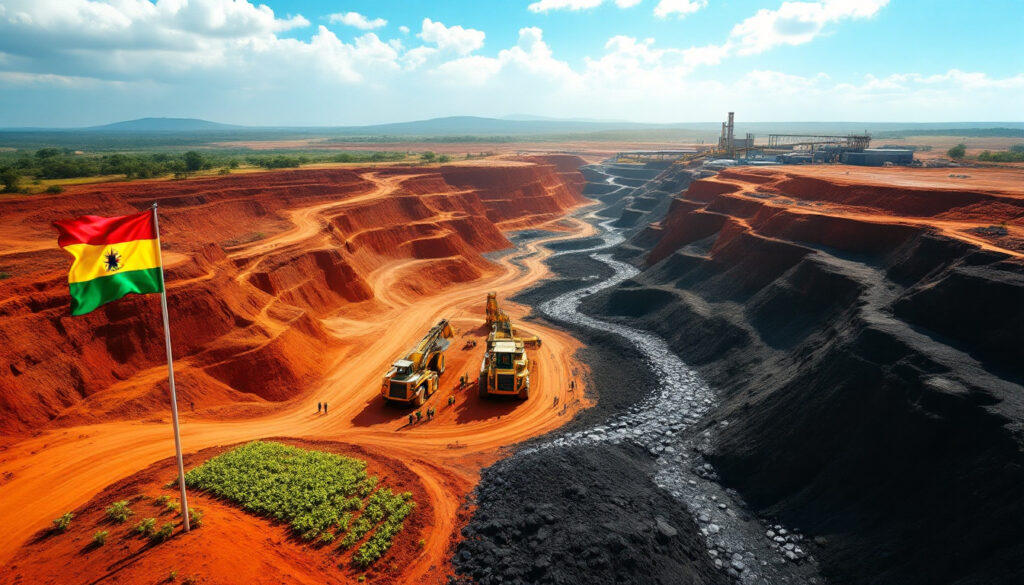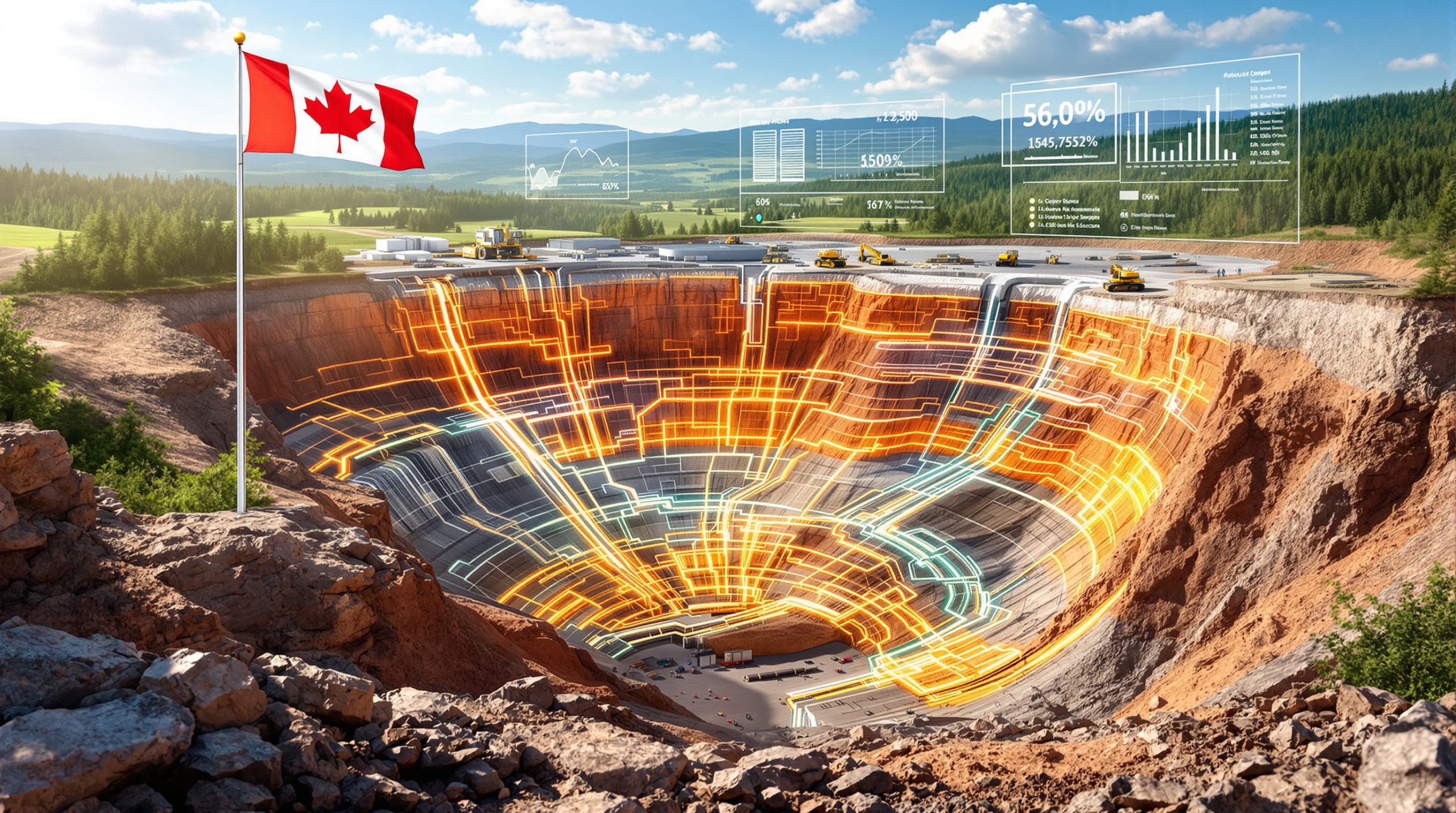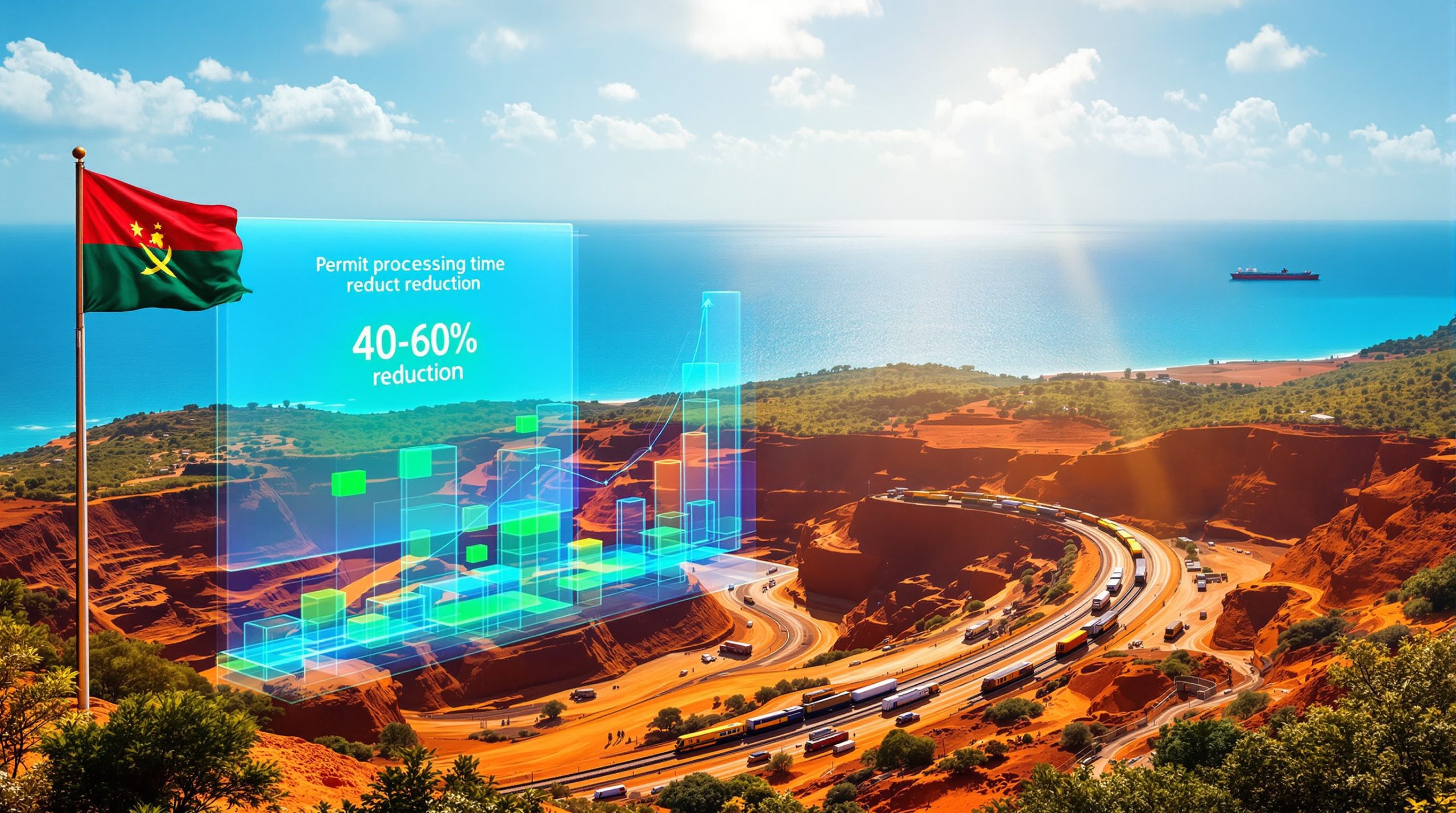What is the Kasiya Rutile-Graphite Project? Understanding Sovereign Metals' Flagship Asset
The Kasiya Rutile-Graphite Project represents one of the world's most significant critical minerals developments outside China. Located in Malawi, this dual-commodity asset is positioned to become a major global supplier of natural rutile and natural flake graphite—two materials essential for decarbonization technologies and industrial applications. With a remarkable production capacity of 24 million tonnes annually by Year 5, Kasiya stands as Sovereign Metals' flagship development with transformative potential.
Sovereign Metals Ltd, the project developer, has strategically aligned with mining giant Rio Tinto to advance this world-class deposit through a methodical development pathway. This partnership brings substantial technical expertise and market access to the project, enhancing its development prospects. Rio Tinto's involvement signals strong industry confidence in Kasiya's economic viability and strategic importance.
The project's exceptional scale and economic potential have positioned it as a transformative asset not only for investors but also for Malawi's economic development. With average annual EBITDA projected at US$409 million and a pre-tax NPV8 of US$2.32 billion, Kasiya represents a rare opportunity in the critical minerals sector where both scale and economics align favorably.
"Kasiya has the potential to transform Malawi's economy while meeting global decarbonization needs through sustainable production of critical minerals," notes Sovereign Metals in recent investor communications.
The Strategic Significance of Kasiya in the Critical Minerals Landscape
Kasiya's emergence comes at a pivotal moment in global critical minerals markets. As nations worldwide implement policies to secure supply chains independent from Chinese dominance, the project offers a compelling alternative for both rutile and graphite supplies. The US Inflation Reduction Act (2022) mandates that 40% of critical minerals in American supply chains must come from non-Chinese sources by 2030, creating a significant market opportunity for projects like Kasiya.
Industry experts at Benchmark Mineral Intelligence have noted that "Kasiya's rutile could offset China's 85% dominance in titanium feedstock," highlighting the project's strategic importance beyond purely commercial considerations. This geopolitical dimension adds another layer of value to Kasiya's development potential.
The technical advantages of Kasiya's minerals further enhance its strategic positioning. Natural rutile contains approximately 95% TiO₂ compared to ilmenite's roughly 50%, significantly reducing downstream processing costs for titanium metal production. Similarly, Kasiya's graphite product addresses 94% of global graphite applications, including high-growth sectors like battery anodes and refractory materials.
Regional comparisons with projects like Syrah Resources' Balama graphite mine in neighboring Mozambique demonstrate Kasiya's competitive advantages while highlighting shared infrastructure and development challenges in southeastern Africa. However, Sovereign's approach incorporates lessons from earlier projects, potentially allowing for smoother development.
How Does Kasiya Compare to Other Critical Mineral Projects?
Resource Scale and Quality Metrics
Kasiya stands apart from competing projects due to its remarkable combination of size, grade, and multi-commodity potential. When compared to other single-commodity operations like Sierra Rutile (Iluka Resources) or Balama (Syrah Resources), Kasiya's dual-product approach offers natural diversification and revenue stability.
Production cost advantages are particularly notable, with graphite production at just US$241 per tonne FOB compared to Syrah Resources' approximately US$390 per tonne. This positions Kasiya in the lowest cost quartile globally, a crucial competitive advantage in commodity markets.
As Rio Tinto's VP of Development has emphasized, "Kasiya's co-located rutile-graphite mineralization is unmatched in scale outside China," highlighting the project's unique geological characteristics.
The deposit features:
- World-class scale with substantial resource tonnage
- Premium-quality natural rutile suitable for high-grade applications
- Large flake graphite with versatility across multiple market segments
- Shallow, free-dig mineralization enabling cost-effective extraction
- Long projected mine life of 25+ years supporting multi-generational operations
The free-dig, shallow ore body (generally less than 30 meters depth) results in an exceptionally low strip ratio of approximately 0.5:1 compared to the industry average of 3:1. This translates directly to lower operating costs and reduced environmental footprint—two critical advantages in today's ESG-focused mining landscape.
These attributes collectively position Kasiya as a strategic asset in the critical minerals supply chain, particularly as Western economies seek alternatives to Chinese supply dominance.
Recent Technical Advancements: The Optimized Prefeasibility Study
Mining Approach Evolution and Environmental Benefits
The January 2025 Optimized Prefeasibility Study (OPFS) marked a significant technical milestone for Kasiya. This Rio Tinto-supported study introduced several key improvements over the initial 2023 prefeasibility assessment, demonstrating the value of the strategic partnership.
The revised capital cost estimate of US$1.1 billion represents a meaningful reduction from the US$1.4 billion outlined in the 2023 PFS, despite global inflationary pressures affecting the mining sector. This cost optimization resulted primarily from the significant technical changes incorporated in the updated study.
As Sovereign's CEO has noted, "Dry mining cuts water use by 40%, which is critically important in water-stressed regions of Malawi." This environmental consideration demonstrates the project's commitment to responsible resource development.
Key technical advancements include:
- Transition to open-pit dry mining using draglines with 28m³ bucket capacity
- Implementation of an owner-operated model with leased equipment
- Enhanced operational flexibility through staged development
- 40% reduction in annual water requirements
- 44% decrease in tailings volume
- Simplified plant configuration avoiding later-stage relocations
- Maintained processing throughput at 24 million tonnes annually by Year 5
The dragline efficiency represents a major technical advantage, with 28m³ bucket capacity significantly outperforming traditional excavators (10–15m³). This equipment selection optimizes both capital efficiency and operational productivity.
These refinements demonstrate Sovereign's commitment to environmental stewardship while optimizing the project's economic parameters. The mining feasibility insights from the geotechnical drilling program initiated in April 2025 will further validate design assumptions for critical infrastructure, particularly the tailings storage facility.
What Are the Economic Fundamentals of Kasiya?
Financial Metrics and Investment Potential
Despite global inflationary pressures affecting capital and operating cost estimates, Kasiya maintains robust economic fundamentals that position it among the most attractive development-stage mining projects globally.
The project's financial highlights include:
- Average annual EBITDA of US$409 million
- Pre-tax NPV8 of US$2.32 billion
- Competitive production cost structure
- Dual revenue streams from rutile and graphite
- Strong potential for premium pricing in specialty markets
Macquarie Capital analysts have noted that "Sovereign's funding secures DFS completion without near-term dilution risk," pointing to the company's strong financial position following the March 2025 capital raise.
The project's economics benefit from the complementary nature of its two primary products, with rutile commanding premium prices in titanium markets and graphite serving diverse industrial applications. This commodity diversification provides natural hedging against market volatility while addressing two distinct supply chains facing potential shortfalls.
While specific IRR and payback period figures await the Definitive Feasibility Study completion, industry comparisons suggest Kasiya will likely achieve metrics competitive with or superior to peer projects in the critical minerals sector, particularly when considering its advantageous cost structure and dual-commodity nature.
Graphite Market Positioning and Competitive Advantage
Product Versatility and Cost Structure
Sovereign's qualification programs have confirmed Kasiya's graphite is suitable for over 94% of end-use markets, establishing remarkable product versatility uncommon in natural graphite operations. This adaptability allows the project to pivot between markets based on pricing and demand dynamics.
Key graphite applications include:
- Battery anodes for electric vehicles and energy storage
- Refractory applications in steel and other high-temperature industries
- Expandable and expanded graphite products for thermal management
- Various industrial applications requiring high-purity carbon
The company anticipates producing a 96% graphite concentrate at an incremental cost of US$241 per tonne (FOB), positioning Kasiya to compete effectively with Chinese producers on a cost basis. This cost advantage derives primarily from the favorable geology and efficient processing methods enabled by the deposit's unique characteristics.
Current market pricing supports this value proposition, with:
- Large flake graphite for refractories commanding up to US$1,193 per tonne
- Battery-grade flake graphite fetching approximately US$564 per tonne
The qualification work with potential offtake partners continues to progress, with particular focus on battery supply chains where traceability and ESG credentials are increasingly important purchasing factors. Sovereign's approach to responsible development aligns with these market requirements, potentially unlocking premium pricing for Kasiya Rutile-Graphite Project products.
How Is Sovereign Addressing Environmental and Social Considerations?
Rehabilitation Success and Community Engagement
The March 2025 quarter saw significant progress in Kasiya's environmental management approach, with the successful rehabilitation of the Pilot Phase test pit demonstrating the project's commitment to responsible mining practices.
"Kasiya sets a benchmark for post-mining land use in Africa," according to Malawi's Environmental Affairs Director, highlighting the project's pioneering approach to rehabilitation.
The rehabilitation program achieved:
- Complete backfilling and soil remediation before year-end 2024
- Landowner return in early 2025 for crop planting without missing a growing season
- Community participation in hands-on remediation activities
- Implementation of intercropping techniques
- Test cultivation of maize and giant bamboo for soil revitalization
This rehabilitation model demonstrates Sovereign's commitment to restoring land to productive agricultural use post-mining, with soil restoration to a depth of one meter to support both subsistence and commercial farming. The 100% backfilling approach contrasts with traditional mining operations that often leave permanent landscape alterations.
Community engagement has been equally impressive, with over 200 locals trained in land rehabilitation techniques. These skills transfer initiatives create sustainable capacity within local communities while addressing immediate project needs—a dual-benefit approach to social development.
Third-party environmental audits are planned to validate these outcomes, providing independent verification of Sovereign's environmental performance. This transparency aligns with contemporary ESG expectations and strengthens the project's social license to operate.
What's Next for Kasiya's Development Timeline?
Definitive Feasibility Study Progress and Strategic Partnership
Geotechnical programs commenced in April 2025 to inform the Definitive Feasibility Study (DFS) layout and engineering design. These activities represent critical path items for the project's development schedule and will establish the foundation for detailed engineering and construction planning.
Current field activities include:
- Drilling across key infrastructure zones
- Geophysical surveys at processing plant locations
- Assessment of tailings storage facility requirements
- Water dam and substation site evaluations
The DFS remains on schedule for completion in Q4 2025, at which point Rio Tinto will have 180 days to exercise its option to:
- Assume project operatorship
- Gain exclusive marketing rights for 40% of Kasiya's output
This strategic decision point represents a major catalyst for Sovereign Metals, potentially triggering a transformative phase for the project's development. Rio Tinto's vast operational experience and market access would significantly de-risk the project's execution and commercial strategy.
The DFS budget allocation reflects the comprehensive scope of this final feasibility stage, with approximately 30% dedicated to metallurgical optimization, 25% to infrastructure design, and the remainder distributed across resource definition, environmental studies, and project management.
Financial Position and Strategic Outlook
Funding Security and Future Catalysts
Sovereign strengthened its financial position in March 2025 through a A$40 million placement, bringing total cash reserves to over A$65 million with zero debt. This healthy capital position ensures full funding through the DFS completion and provides flexibility for accelerating key workstreams as needed.
While this placement diluted Rio Tinto's holding to 18.5%, the strategic investor remains actively engaged through the joint technical committee. This continued involvement underscores Rio's commitment to the project despite the modest equity dilution.
Key upcoming catalysts include:
- Updated mineral resource estimate
- Continued graphite qualification testwork results
- Potential offtake agreement announcements
- Social development initiative updates
- DFS completion in Q4 2025
The market anticipates several strategic developments throughout 2025, with particular focus on offtake discussions as battery and titanium supply chains increasingly prioritize secure, ESG-compliant raw material sources. Sovereign's engagement with potential customers across both product streams continues to advance, with formal announcements expected as the DFS nears completion.
Why Is Kasiya Important for Global Supply Chains?
Strategic Value in Critical Mineral Security
As nations worldwide pursue decarbonization strategies, the demand for both rutile and graphite continues to accelerate. Kasiya's significance extends beyond its economic metrics to its strategic role in reshaping critical mineral supply chains currently dominated by Chinese production and processing capacity.
The project's strategic importance manifests in multiple dimensions:
- Diversifying critical mineral supply chains away from Chinese dominance
- Supporting Western industrial security for titanium metal production
- Providing battery materials for electric vehicle manufacturing
- Supplying essential materials for renewable energy infrastructure
- Creating a model for responsible resource development in Africa
The implementation of policies like the US Inflation Reduction Act and EU Critical Raw Materials Act emphasizes Western governments' commitment to supply chain diversification, creating a favorable regulatory environment for projects like Kasiya that offer non-Chinese material sources.
The project's dual-commodity nature provides natural hedging against market volatility while addressing critical mineral shortages while addressing two distinct supply chains facing potential shortfalls. This unique positioning enhances Kasiya's strategic value beyond what single-commodity developments can offer.
How Does Kasiya's Development Model Benefit Malawi?
Economic Development and Skills Transfer
Beyond its commercial potential, Kasiya represents a transformative opportunity for Malawi's economic development. As one of the country's largest potential mining operations, the project could significantly impact national GDP while creating sustainable economic opportunities across multiple sectors.
The project's benefits to Malawi include:
- Creation of skilled employment opportunities
- Technology transfer and workforce development
- Infrastructure improvements benefiting surrounding communities
- Agricultural enhancement through land rehabilitation
- Potential for downstream processing and value addition
- Tax revenue generation for national development
Sovereign's approach emphasizes maximizing local benefits while meeting global standards for environmental and social governance. Partnerships with local educational institutions support skills development programs that prepare Malawians for employment opportunities throughout the project lifecycle.
The agricultural rehabilitation model demonstrates particular promise for long-term community benefits, as post-mining land use planning prioritizes food security and commercial farming potential. This integration of mining and agriculture represents an innovative approach to sustainable resource development in agricultural economies.
Furthermore, Sovereign has implemented green transformation strategies that align with global sustainability goals, making the project more attractive to environmentally conscious investors and partners.
FAQ: Sovereign Metals and the Kasiya Project
What minerals will be produced at Kasiya?
Kasiya will produce natural rutile (a premium titanium dioxide mineral) and natural flake graphite, both of which are considered critical minerals essential for decarbonization technologies and industrial applications.
How is Rio Tinto involved with the Kasiya project?
Rio Tinto provides technical support through a joint committee and holds an 18.5% stake in Sovereign Metals. Upon DFS completion in Q4 2025, Rio Tinto will have 180 days to exercise an option to become project operator and secure exclusive marketing rights for 40% of production.
What makes Kasiya different from other mining projects?
Kasiya stands out for its dual-commodity nature (rutile and graphite), world-class scale, shallow mineralization allowing cost-effective extraction, and strong ESG credentials including successful agricultural rehabilitation programs.
When is Kasiya expected to begin production?
While specific production timelines haven't been finalized, the project is progressing through its DFS phase with completion expected in Q4 2025. Construction decisions would follow, suggesting potential production in the 2027-2028 timeframe, subject to final investment decisions.
What are the environmental considerations for the Kasiya project?
The project has implemented several environmental improvements, including a 40% reduction in water requirements, 44% decrease in tailings volume, and a proven rehabilitation model that restores land to productive agricultural use with soil remediation to one-meter depth.
What markets will Kasiya's products serve?
Kasiya's natural rutile will primarily serve titanium metal and pigment markets, while its graphite is suitable for 94% of end-use applications including battery anodes, refractories, and expandable graphite products for thermal management.
Further Exploration
Readers interested in learning more about critical minerals development in Africa can also explore related educational content about rutile and graphite markets, such as industry reports from Benchmark Mineral Intelligence and other market analysis providers that track these essential commodities. The growing importance of Africa's critical minerals and [
Ready to Spot the Next Major ASX Mineral Discovery?
Don't miss your chance to capitalise on significant ASX mineral discoveries in real-time with Discovery Alert's proprietary Discovery IQ model. Visit our discoveries page today to see how major mineral discoveries like Kasiya can generate substantial returns for investors who position themselves early.




